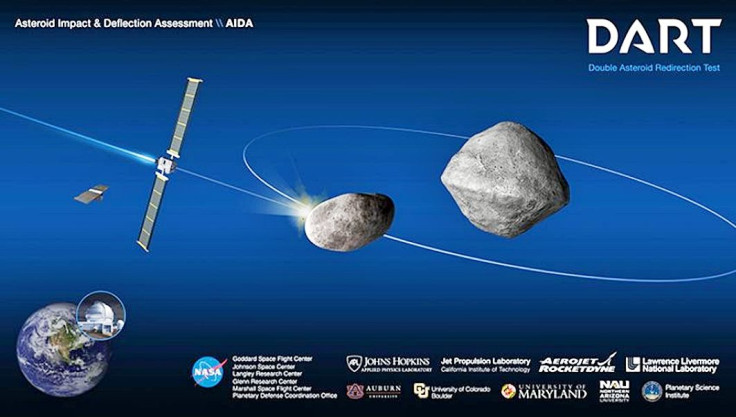NASA Plans To Smash An Asteroid To Test Its Planetary Defense Plan. Here's How

NASA is working on humanity’s first planetary defense system. The premise is simple– the space agency wants to redirect an asteroid by crashing a spacecraft into it.
Double-Asteroid Redirection Test (DART) is a spacecraft that will be launched on SpaceX’s Falcon 9 rocket in July 2021 and is expected to reach the Didymos two-asteroid system by 2022. The probe will then crash into 'Didymoon' – a satellite of Didymos.
The crash will be documented and studied by telescopes on earth and the data will help researchers gauge the effectiveness of the strategy and whether such 'kinetic impactors' will actually be able to deflect asteroids.
NASA doesn’t intend it to be only a 'crash and burn' strategy but actually wants to gather a ton of data on how the asteroid reacts upon impact. It has partnered with multiple space agencies and labs for this purpose. These include the John Hopkins University Applied Physics Laboratory, the Italian Space Agency and the European Space Agency (ESA) which signed up for the effort Tuesday.
ESA will launch the Hera spacecraft in 2024 to study the effects of DART which is expected to reach the Didymos system by 2026. It will carry two tiny CubeSats, which will gather data after landing on the asteroid. One CubeSat, the Asteroid Prospection Explorer has been designed by a Swedish-Finnish-Czech-German consortium, that will study the internal structure and composition of the asteroids. The other, Juventus, designed by a Danish and a Romanian company will study the structure of Didymoon and its gravity.
DART itself will also carry a CubeSat designed by the Italian Space Agency. The briefcase-sized Light Italian Cubesat for Imaging of Asteroids (LICIS) will separate from DART before it crashes on Didymoon and observe the impact from a safe distance. It will then beam the data and photos to earth.
Both NASA and ESA had tried to do the project in the past but it was abandoned due to funding issues. On Tuesday, ESA announced that it has decided to fund the Hera mission.
Funding has been a concern for unique missions like DART. But NASA has gone ahead with the bold move and will be spending $313.9 million on the mission, according to its Financial Year 2020 budget.
DART and similar missions hold the key to deflecting future asteroids, including a 236-foot one set to approach earth on Wednesday.
© Copyright IBTimes 2025. All rights reserved.





















